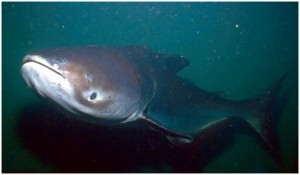Discover the programme we have implemented since 2013 in collaboration with WWF for assessing the aquatic biodiversity in the Mekong River using eDNA.
The Mekong River: a remarkable ecosystem
The Mekong is the world’s 12th longest river, running over 4,900 km from the Tibetan plateau through China, Myanmar (Burma), Laos, Thailand, Cambodia and Vietnam. The river hosts exceptional biodiversity, with, in particular 1,300 fish species inhabiting the main channels, tributaries, associated wetlands, and estuary. This river is a critical habitat, with migration and breeding corridors for numerous species of conservation and economic significance. It supports many unique ecosystems and a wide array of priority species therefore representing an extraordinary ecological heritage. Biodiversity in the lower Mekong is also fundamental for the viability of 55 million people living in this area.
An extraordinary but fragile biodiversity
Due to the increase in human population, infrastructure development (roads, ports, hydroelectric dams, etc.), conversion of agricultural lands into banks, overfishing and hunting, habitats are lost or degraded and the Mekong megafauna is now endangered. Many threatened or priority species inhabit the Mekong River, including mammals, such as the Irrawaddy dolphin, reptiles like the Siamese Crocodile and birds such as Giant Ibis. The Mekong Giant Catfish, one of the largest freshwater fish, is also critically endangered. The knowledge of its distribution is limited due to difficulties related to monitoring of this rare and secretive species. The threats to the Giant Catfish, such as infrastructure development, overfishing, destruction of reproduction habitats, and pollution, led to a 90% decline of the total number of individuals in recent decades and only a few hundred individuals survive today.
How the eDNA tool can contribute to the biodiversity conservation in the Mekong River
To preserve the Mekong River environment, it is necessary to strengthen biodiversity surveys to gain a better knowledge of the species inhabiting the Mekong and to regularly monitor biodiversity. However, such data may be difficult to gather using traditional inventory methods, particularly for the monitoring of endangered species that are usually present at low densities and in habitats that are difficult to study.
As part of the programme “Living Mekong” WWF-Laos and SPYGEN established, in 2013, a collaboration agreement to evaluate the potential of using eDNA to strengthen the actions of biodiversity conservation and management in the Mekong River. Two types of eDNA approaches are tested in this project: a specific approach (VigiDNA S) used to track endangered species, such as the Giant Catfish, and a multi-specific approach (VigiDNA M), enabling the monitoring of global aquatic biodiversity in the Mekong. The results obtained in this programme will provide recommendations and guidelines for biodiversity monitoring using eDNA in the Mekong Basin, and more broadly in complex and poorly studied aquatic ecosystems.
Programme news:
April 2015: The first eDNA results of this programme were presented during the ATBC (Asia-Pacific Chapter) annual meeting in a plenary session: “Knowing but not seeing: non invasive DNA sampling for monitoring Asia’s threatened biodiversity”.


